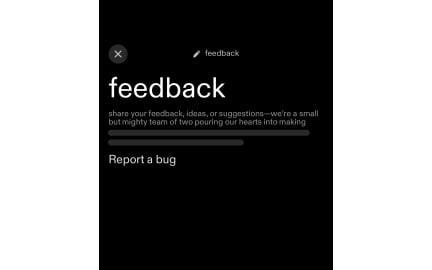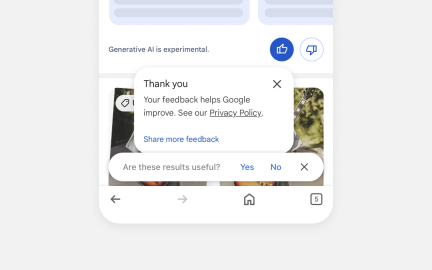Continuous Improvement
Continuous improvement means regularly refining tools, workflows, or features based on data and feedback to build better products over time.
What is Continuous Improvement?
Your organization's performance plateaus because teams accept current processes and results as fixed constraints rather than opportunities for optimization, missing chances to enhance efficiency, quality, and competitive advantage through systematic enhancement and learning.
Most teams focus on completing current work without systematic approaches to identifying and implementing improvements, missing opportunities to optimize performance and adapt to changing conditions through incremental enhancement and process evolution.
Continuous improvement is the ongoing effort to enhance products, processes, and performance through systematic identification and implementation of small, incremental changes that accumulate into significant competitive advantages and operational excellence over time.
Organizations practicing continuous improvement achieve 35% better performance over time, 45% faster adaptation to market changes, and significantly improved employee engagement because teams actively solve problems rather than accepting inefficiencies as unchangeable constraints.
Think about how manufacturing companies like Toyota built competitive advantages through continuous improvement that optimizes every aspect of production, or how software companies use continuous improvement to enhance development velocity and product quality through systematic optimization.
Why Continuous Improvement Matters for Competitive Excellence
Your competitive position erodes because organizational capabilities remain static while markets and competitors evolve, leading to performance gaps that accumulate over time when improvement isn't systematic and sustained across organizational processes.
The cost of not pursuing continuous improvement compounds through every missed optimization opportunity and competitive advance. You get increasing performance gaps, reduced efficiency, missed innovation opportunities, and competitive disadvantage when organizational capabilities don't evolve systematically.
What effective continuous improvement delivers:
Better operational efficiency and performance optimization because systematic improvement identifies and eliminates waste while enhancing productivity through incremental process enhancement that accumulates significant competitive advantages.
When improvement is continuous, organizational performance increases consistently rather than remaining static or declining relative to evolving competitive standards and market expectations.
Enhanced adaptability and market responsiveness through improvement culture that enables rapid response to changing conditions rather than rigid processes that resist adaptation and market evolution.
Improved employee engagement and problem-solving capability because continuous improvement empowers teams to solve problems and optimize their work rather than just accepting inefficiencies and frustrations without improvement agency.
Stronger competitive positioning and market differentiation as continuous improvement creates performance advantages that competitors struggle to match without similar improvement culture and systematic optimization processes.
More effective innovation and strategic development through improvement mindset that identifies opportunities for breakthrough enhancements rather than just incremental optimization without strategic innovation consideration.
Advanced Continuous Improvement Strategies
Data-Driven Improvement and Performance Analytics: Use advanced analytics to identify improvement opportunities rather than just observation-based improvement, enabling systematic optimization based on performance data and trend analysis.
Cross-Functional Improvement and System Optimization: Apply improvement across organizational boundaries rather than just departmental optimization, enabling systematic enhancement that addresses workflow integration and coordination effectiveness.
Innovation-Driven Improvement and Breakthrough Enhancement: Combine incremental improvement with breakthrough innovation rather than just process optimization, creating opportunities for competitive leap-frogging and market leadership development.
Customer-Centric Improvement and Value Creation: Focus improvement on customer value creation rather than just internal efficiency, ensuring optimization serves competitive advantage and market positioning through customer satisfaction enhancement.
Step 1: Establish Improvement Culture and Leadership Support (Week 1)
Create organizational commitment to improvement through leadership modeling and systematic support for improvement initiatives rather than just encouraging improvement without structural support and resource allocation.
This creates continuous improvement foundation based on organizational culture rather than just individual improvement efforts that might not be sustained without systematic support and strategic prioritization.
Step 2: Implement Systematic Problem Identification and Opportunity Assessment (Week 1-2)
Build processes for identifying improvement opportunities through data analysis, employee feedback, and performance measurement rather than hoping problems and opportunities will be obvious without systematic investigation.
Focus problem identification on issues that teams can actually influence rather than external factors that might not be changeable through organizational improvement efforts and process optimization.
Step 3: Develop Improvement Methodologies and Implementation Frameworks (Week 2)
Create structured approaches to testing and implementing improvements including experimentation, measurement, and learning processes rather than ad-hoc changes without systematic validation and optimization.
Balance improvement rigor with practical implementation to ensure improvement efforts generate measurable results without creating excessive overhead that constrains productivity and team effectiveness.
Step 4: Train Teams in Improvement Skills and Problem-Solving Methods (Week 2-3)
Build organizational capability for improvement through training and skill development rather than just encouraging improvement without providing teams with tools and methods for effective optimization.
Step 5: Monitor Improvement Impact and Sustain Enhancement Culture (Week 3)
Track whether improvement efforts actually enhance performance and organizational capability rather than just implementing improvement activities without measuring effectiveness and strategic impact.
This ensures continuous improvement generates sustainable competitive advantage rather than just improvement activities that don't create lasting organizational enhancement and performance optimization.
If continuous improvement doesn't enhance performance, examine whether efforts address real problems and opportunities rather than just implementing improvement processes without strategic focus and outcome measurement.
The Problem: Continuous improvement that focuses on activity and process optimization rather than outcomes and strategic impact that actually improve competitive positioning and business results.
The Fix: Focus improvement on strategic outcomes and competitive advantage rather than just process efficiency, ensuring optimization serves business objectives and market positioning rather than just internal metrics.
The Problem: Improvement initiatives that start enthusiastically but lose momentum due to lack of systematic support and measurement that sustains enhancement culture and strategic focus.
The Fix: Create systematic improvement processes and measurement rather than just encouraging improvement, ensuring enhancement efforts are sustained through organizational support and progress tracking.
The Problem: Continuous improvement that becomes bureaucratic overhead rather than empowering problem-solving, creating administrative burden without proportional performance enhancement and competitive advantage.
The Fix: Keep improvement processes focused on practical problem-solving rather than just comprehensive improvement documentation, ensuring enhancement efforts generate results rather than just improvement activity.
Create continuous improvement approaches that enhance competitive advantage rather than just organizational efficiency that doesn't improve strategic positioning and market success significantly.
Recommended resources
Courses

UX Research

HTML Foundations

Mentorship Mastery
Lessons

Graceful Failure Design

Managing System Evolution







